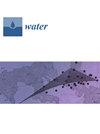使用两种 MCDM 方法整合评估阿塔卡马沙漠干旱地区 Locumba 盆地的潜在含水层补给区:模糊 AHP 和 TOPSIS
IF 3
3区 环境科学与生态学
Q2 ENVIRONMENTAL SCIENCES
引用次数: 0
摘要
用于人类消费的天然含水层是世界上最重要的资源之一。由于当地人口的用水量有限,Locumba 盆地面临着巨大的挑战。因此,寻找可能的含水层补给区是缺水地区城市发展的关键工作。为评估这一问题,本研究建议使用模糊 AHP 混合方法与 TOPSIS 算法相结合,以获得潜在的含水层补给图。对影响含水层生产力和容量的十个因素进行了模糊 AHP 分析,以获得其权重。利用 TOPSIS 算法,划定了具有高补给潜力的最有利地区。结果表明,对补给影响最大的因素是降水、渗透性和坡度,其权重分别为 0.22、0.19 和 0.17。与此同时,TOPSIS 的结果突出显示了分布在 Locumba 盆地的潜在补给区,这些补给区被分为五类:非常高(13%)、高(28%)、中等(15%)、低(28%)和非常低(16%)。本研究采用的方法旨在为研究地区的有效水资源管理迈出第一步。本文章由计算机程序翻译,如有差异,请以英文原文为准。
Assessment of Potential Aquifer Recharge Zones in the Locumba Basin, Arid Region of the Atacama Desert Using Integration of Two MCDM Methods: Fuzzy AHP and TOPSIS
Natural aquifers used for human consumption are among the most important resources in the world. The Locumba basin faces significant challenges due to its limited water availability for the local population. In this way, the search for possible aquifer recharge zones is crucial work for urban development in areas that have water scarcity. To evaluate this problem, this research proposes the use of the hybrid Fuzzy AHP methodology in conjunction with the TOPSIS algorithm to obtain a potential aquifer recharge map. Ten factors that influence productivity and capacity in an aquifer were implemented, which were subjected to Fuzzy AHP to obtain their weighting. Using the TOPSIS algorithm, the delineation of the most favorable areas with high recharge potential was established. The result shows that the most influential factors for recharge are precipitation, permeability, and slopes, which obtained the highest weights of 0.22, 0.19, and 0.17, respectively. In parallel, the TOPSIS result highlights the potential recharge zones distributed in the Locumba basin, which were classified into five categories: very high (13%), high (28%), moderate (15%), low (28%), and very low (16%). The adapted methodology in this research seeks to be the first step toward effective water resource management in the study area.
求助全文
通过发布文献求助,成功后即可免费获取论文全文。
去求助
来源期刊

Water
WATER RESOURCES-
CiteScore
5.80
自引率
14.70%
发文量
3491
审稿时长
19.85 days
期刊介绍:
Water (ISSN 2073-4441) is an international and cross-disciplinary scholarly journal covering all aspects of water including water science and technology, and the hydrology, ecology and management of water resources. It publishes regular research papers, critical reviews and short communications, and there is no restriction on the length of the papers. Our aim is to encourage scientists to publish their experimental and theoretical research in as much detail as possible. Full experimental and/or methodical details must be provided for research articles. Computed data or files regarding the full details of the experimental procedure, if unable to be published in a normal way, can be deposited as supplementary material.
 求助内容:
求助内容: 应助结果提醒方式:
应助结果提醒方式:


